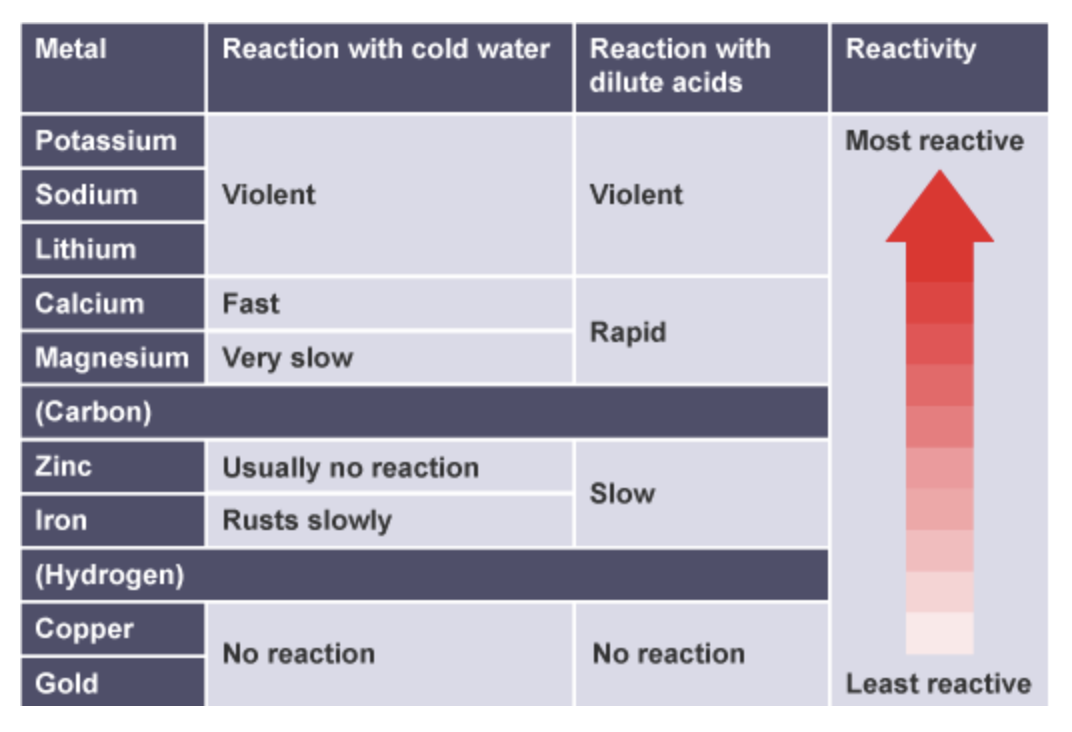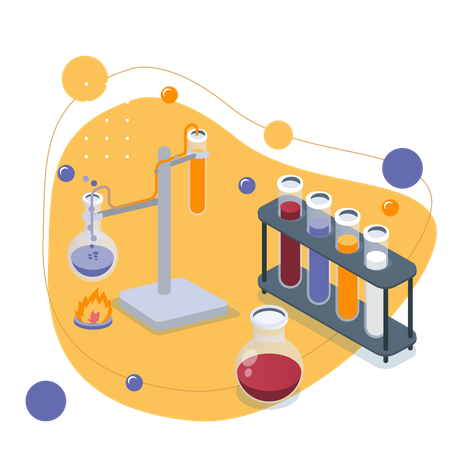The Reactivity Series (GCSE Chemistry)
The Reactivity Series (GCSE Chemistry) is a fundamental concept for understanding how different metals react, a principle that is often demonstrated and applied in various forms of Chemistry work experience.
What Is the Reactivity Series?
- Metal atoms form positive ions. Metals react with non metals, to form ionic compounds. In doing so, metal atoms always lose electrons to form positive ions. Metal atoms are always oxidised when they react.
For example potassium + chlorine → potassium chloride
2 K(s) + Cl2(g) → 2KCl(s)
K → K+ + e–
- More reactive metals lose electrons more easily than less reactive metals. When a more metal reacts with a compound containing a less reactive metal, the more reactive metal atoms form positive ions more easily. More reactive metals are more easily oxidised.
- Metals react with water or acids. We can determine reactivity based on reactions with water and dilute acids.
- Reactive metals react more vigorously than less reactive metals. Compared to less reactive metals, more reactive metals will react more violently, faster and with more energy given out in a given time, producing a higher temperature increase.
Non Metals in the Reactivity Series
Despite being non metals, carbon and hydrogen are included in the reactivity series. These act as a comparison for the metals and they are also helpful for electrolysis (which we will cover later on).
Metals and the Reactivity Series
This is the reactivity series. This list goes from most reactive to least reactive:
- Potassium – most reactive, so most easily forms positive ions
- Sodium
- Lithium
- Calcium
- Magnesium
- Aluminium
- Zinc
- Iron
- Copper
- Silver
- Gold
How to Remember the Reactivity Series
One of the easiest ways on how to remember the reactivity series is to make up a silly sentence with the first letter of each metal. This could be something like: Penguins Swim Like Crazy, Making A Zoo In Cold, Snowy Greenland.
If you’d like another mnemonic for the reactivity series, you can also try Please Stop Liking Cats, My Amazing Zebra Is Constantly Sleeping Gracefully.
Metal Displacement
- Metals can be displaced. When carrying out a displacement reaction, a more reactive metal displaces a less reactive metal from a solution of its compound.
- Potassium can displace zinc. Of the two, potassium is higher up in the reactivity series, therefore it will displace zinc, from a solution of zinc chloride.
2K + ZnCl2 → 2KCl + Zn
Potassium + zinc chloride → potassium chloride + zinc
This is a list of elements ordered from the most reactive to the least reactive. This list is used to predict how elements will react with each other in chemical reactions. Understanding this is important in GCSE Chemistry because it helps students understand the behaviour of different elements and predict the products of chemical reactions.
The series typically includes the following elements: potassium, sodium, calcium, magnesium, aluminium, zinc, iron, lead, copper, and silver.
The reactivity series is determined by conducting experiments to see how different elements react with each other. Factors such as the ease of oxidation, the tendency to lose electrons, and the ability to displace other elements from their compounds are all taken into account when determining the reactivity series.
It is important in GCSE Chemistry because it helps students understand the behavior of different elements and predict the products of chemical reactions. This knowledge is essential for understanding key concepts in GCSE Chemistry, such as electrolysis and corrosion.
The series has a number of practical applications, such as predicting the products of chemical reactions, determining which elements can be extracted from their ores, and understanding the process of corrosion. In industry, the reactivity series is used to determine which materials are best suited for certain applications, such as construction and electrical wiring.
The most reactive element is potassium, followed by sodium. These elements are highly reactive and will react with water, air, and other elements to form compounds.
The least reactive element is silver. This element is very unreactive and does not easily form compounds with other elements.
One helpful way to remember the order of the elements is to use a mnemonic, such as “Please Excuse My Dear Aunt Sally”. The first letters of each word in the mnemonic correspond to the first letters of the elements in the reactivity series (Potassium, Sodium, Calcium, Magnesium, Aluminum, Zinc, Iron, Lead, Copper, Silver).







Still got a question? Leave a comment
Leave a comment